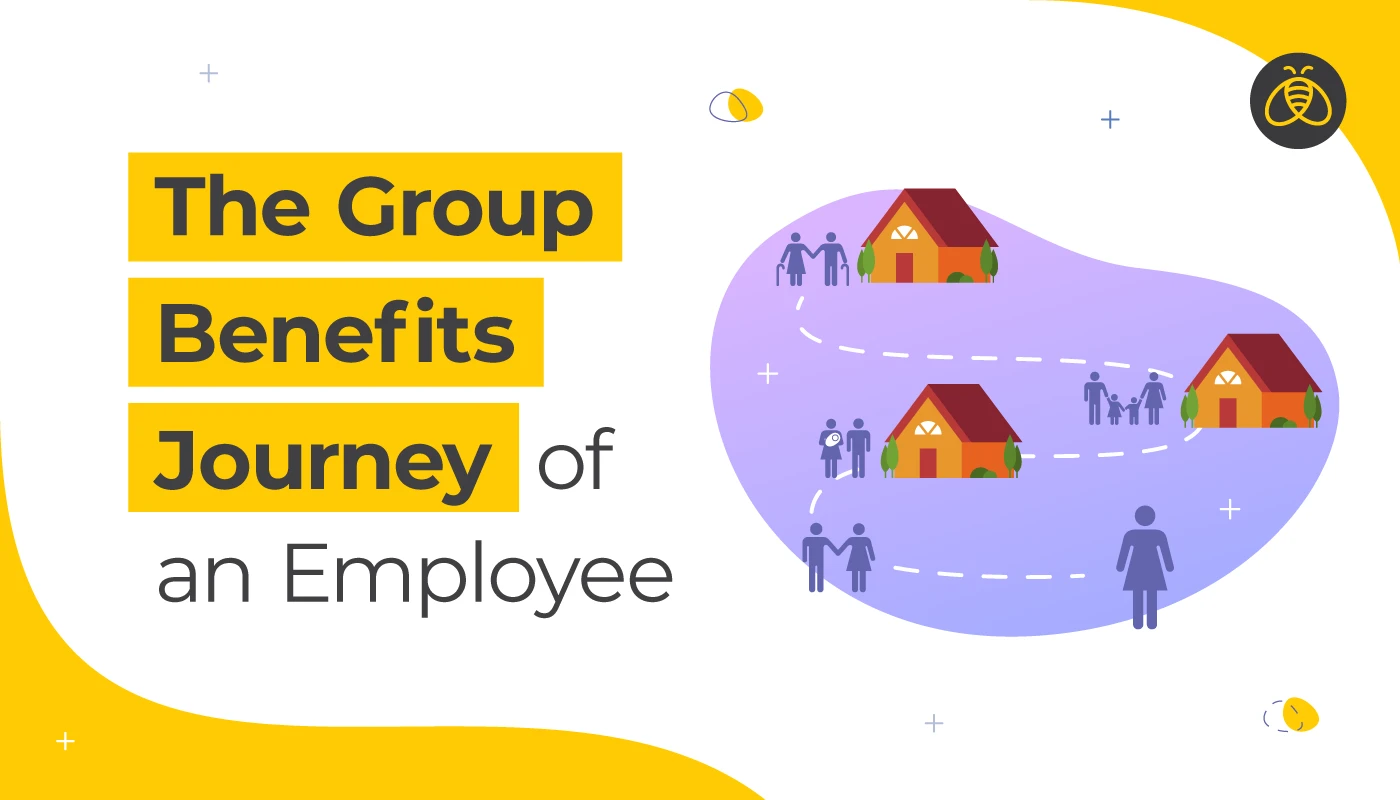The Group Benefits Journey of an Employee
By: Benefits by Design | Tuesday July 4, 2023
Updated : Wednesday September 6, 2023
It’s normal for a person’s needs and wants to evolve as they move through the different stages of life. What’s important to a person at twenty may change by the time they’re fifty. As this natural evolution takes place, it’s normal for a person’s benefits requirements to change as well. Let’s take a look at this benefits journey in action through the eyes of Emily, a recent graduate from post-secondary school.
The Benefits Journey – Starting out
Emily is 23 years old, has recently graduated from college and is looking forward to beginning her career. She is single and lives at home with her parents to save money. When Emily was a student, she remained covered under her parents’ benefits plan as a dependent. As an overage dependent, one of the conditions of remaining on the plan is continued enrolment in a post-secondary school.
Luckily, Emily secures a new job as a junior accountant and is offered a benefits plan as part of her total compensation. Her coverage looks something like this:
- Life and Accidental Death and Dismemberment (AD&D) insurance offered at 2x her annual salary ($40,000)
- Extended health and dental insurance (80% coverage)
- Long-Term Disability (LTD) insurance
- Health Care Spending Account ($500)
With no major debts and no dependents to benefit from the payouts, Emily is satisfied with her life insurance amount. Health and dental insurance are excellent to maintain a healthy lifestyle and overall health, and the Health Care Spending Account (HCSA) helps cover any gaps in coverage and is often used to cover the 20% of prescription costs from her copay. Emily also recognizes that her disability insurance is good to have, as accidents can happen anytime, and she’ll need an income.
Taking on large debts
Five years later, Emily has met her current partner, Derek, and the two purchase a home together. Between the mortgage, utilities, car payment, and other expenses, Emily and Derek realize that, should the worst happen, they would be unable to carry these expenses on their own.
This is the part in her benefits journey where having a larger benefit amount for life insurance comes in handy. Emily seeks out additional life insurance options to increase her coverage (and encourages Derek to do the same). Now, in the event of her death, her partner will be able to maintain their current home and expenses. Life insurance at this stage is important to protect loved ones and set them up for success in the event of a loss of life.
At this point, Emily also adds her partner to her health and dental insurance by transitioning from “single” to “family” coverage. This increases her premiums, but now both she and her partner have access to health and dental coverage.
Starting a family
Fast forward another ten years and Emily and Derek have married and become parents. With two children, two vehicles, and a mortgage, their expenses have increased significantly by this stage in their benefits journey.
Emily and Derek realize that now is the time for more coverage. They increase their life insurance policies, making sure there’s enough to cover the remaining mortgage, debts, expenses, and more. They also look into critical illness insurance as further protection and purchase a separate policy.
In addition, the two have come to realize that their health and dental coverage is seeing more use as they schedule routine doctor and dentist appointments for their two children. Likewise, Emily and Derek’s health needs have evolved as well over the years, requiring more usage of their health services and coverage.
Minimal debts and dependents
Fifteen years go by, and Emily and her husband, Derek, have successfully paid off their mortgage. Their children have grown up and moved out of the house, and their bills and overall cost of living are lower.
With no major debts and no dependents in the house, Emily’s family situation has changed significantly, and therefore her benefits journey has as well. She and her husband discuss things and decide to roll back some of their coverages. Many insurers reduce life insurance benefits by as much as 50% at ages 60+ anyway, and so they decide to maintain only a small life insurance policy to cover funeral costs and provide their children with a small amount.
The health and dental aspects of the group coverage would still be important. As our bodies age, we usually require more maintenance, and extended health and dental can certainly help with that. As they approach the termination age (a typical age of termination for group health and dental insurance is 65), they consider individual health and dental insurance to maintain their coverage.
Each persons’ benefits journey evolves
It’s important to note that a person’s needs and wants change over time. In the case of Emily, taking on large debt in the form of a mortgage, marrying, and then having children significantly influenced her decisions to increase her coverage.
No person’s life or benefits journey will be the same, but maintaining insurance coverage appropriate for your stage of life is important. Think carefully about your own situation and evaluate your needs. Many Canadian employers offer benefits plans to get you started with coverage.

